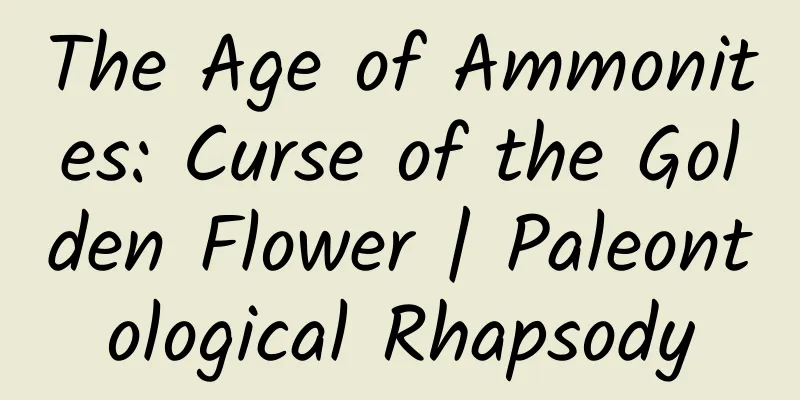The efficacy and function of Ophiopogon japonicus

|
In autumn and winter, the temperature becomes very dry, and the impact of such temperature on our lungs cannot be ignored. At this time, you need to eat some foods that nourish the yin and lungs, and Ophiopogon japonicus is a very good choice! Ophiopogon japonicus is cold in nature and moist in nature, and has good effects in nourishing yin and moistening dryness. Therefore, eating Ophiopogon japonicus can moisturize the lungs very well, and it can also play a role in nourishing the stomach. The following is a detailed introduction to the effects and functions of Ophiopogon japonicus. As a good product for nourishing yin and moistening the lungs, what are the functions and effects of Ophiopogon japonicus? 1. Cleanse the mind and relieve restlessness: Suitable for symptoms such as internal fire disturbing the world, evil heat from febrile diseases entering the camp, fever that is worse at night, and restlessness. It is also suitable for those who suffer from heat damaging qi and yin, irritability, dry mouth, sweating and fatigue. Deficiency of heart yin, restlessness, insomnia, red tongue with little coating. 2. Nourishing Yin and moistening the lungs: Mainly used to treat yang deficiency and lung dryness, dry cough, dry cough, fatigue fever and hemoptysis. 3. Nourish the stomach, produce fluid and quench thirst: It is good for treating symptoms such as insufficient stomach yin, dry tongue and mouth, poor appetite and no hunger. In addition, it can also be used to treat yang deficiency, dry intestines, and constipation. 4. Modern pharmacological research also shows that Ophiopogon japonicus mainly contains ginsenosides, steroidal ginsenosides, flavonoids, sitosterol, glucose, carbohydrates, vitamins, etc., which have the effects of relieving fatigue, lowering cholesterol, enhancing immune cell function and lowering blood lipids. In addition, Ophiopogon japonicus has sedative, hypnotic, anti-myocardial ischemia, anti-arrhythmia, anti-tumor effects, especially in improving the health of the elderly has all-round role. 5. In addition, Ophiopogon japonicus also has the effect of promoting the repair of pancreatic islet cell function, increasing liver glycogen, and lowering blood sugar. It is a common ingredient in the prescription of diabetic patients. Ophiopogon japonicus can be used as tea. Add appropriate amount of Ophiopogon japonicus, soak in boiling water, and take it several times a day, which can effectively relieve the symptoms of thirst. Some diabetics suffer from deficiency of both Qi and Yin, so when drinking Ophiopogon japonicus water, they can add a little Codonopsis pilosula to better replenish Qi and blood. There are many benefits of drinking Ophiopogon japonicus in water. Below, let's talk about them one by one: 1. Drinking Ophiopogon japonicus soaked in water can treat summer sweating and physical exhaustion. First, we can use 10 grams each of Ophiopogon japonicus and Wild ginseng, 6 grams of Schisandra chinensis, decocted in water, 2 doses a day. It is effective for sweating, physical overexertion, chest tightness and palpitations, low blood pressure, excessive sweating and dry mouth, and fatigue. 2. Drinking Ophiopogon japonicus soaked in water can treat intestinal dryness and constipation. Take 15 grams each of Ophiopogon japonicus, Rehmannia glutinosa, and Adenophora Root. Take it in decoction, 1 dose per day. It has the effect of promoting digestion and is used to relieve constipation. 3. To treat angina pectoris caused by coronary heart disease, take 45 grams of Ophiopogon japonicus, boil it in water to obtain 30-40 ml, and take it in divided doses for 3 to 18 months. It is effective in relieving angina pectoris, chest tightness and shortness of breath. 4. To treat chronic gastritis, take 9 grams each of Ophiopogon japonicus and Scutellaria baicalensis, 10 grams each of Codonopsis pilosula, Polygonatum odoratum and Morinda officinalis. Take it in decoction, 1 dose per day. It is effective for those with insufficient stomach yin. 5. To treat diabetes, use 30 grams of reed root, 15 grams of Ophiopogon japonicus, and 12 grams of Anemarrhena asphodeloides. First boil over low heat for 30 minutes, filter out the decoction, add 500ml of water to the residue, bring to a boil, then switch to low heat and boil for 20 minutes, remove the residue and take the juice, mix the decoctions from the two times and take one dose per day. It is used for diabetics with dry mouth and throat, excessive drinking, restlessness, or low fever, red tongue, and weak pulse. |
<<: Effects of Centella Asiatica Extract on Skin
>>: The efficacy and contraindications of Huohu
Recommend
It is heartbreaking to see a young child being mauled by a fierce dog in a neighborhood! The mortality rate is almost 100%. Why is rabies so scary?
Recently, incidents of vicious dogs injuring peop...
The efficacy and function of Tianshui ant grass
Tianshui Yicao is a famous traditional commonly u...
The seemingly insignificant "invisible habit" is actually a kind of "zombie behavior"! ?
Leviathan Press: Getting up early and drinking a ...
A hornet's nest as big as a castle, do you dare to touch it?
“Poking a hornet’s nest” is a common childhood me...
The efficacy and function of water chestnut root
The root of the water chestnut is a traditional C...
Can lying down with eyes closed when you can’t sleep reduce the damage caused by insomnia?
This article was reviewed by Zhao Wei, MD, associ...
Why does the “garlic smell” linger?
Garlic is a versatile seasoning and can be found ...
Home appliances require direct current, but why do we use alternating current at home?
We know that electricity can be divided into alte...
What are the medicinal values of onion roots?
I believe that many friends in the north have the...
Effects of Zhangmu Tree
When I was in the countryside, I saw many familie...
Why is your phone still running low on battery?
Many of today's mobile phones have battery ca...
The efficacy and function of wind grass
Everyone is familiar with Fengqicao. It has a lon...
The efficacy and function of Tianshanqi
What are the effects and functions of Tianshanqi?...
The efficacy and function of Patrinia odoratum
The efficacy and function of Patrinia dasyphylla ...









